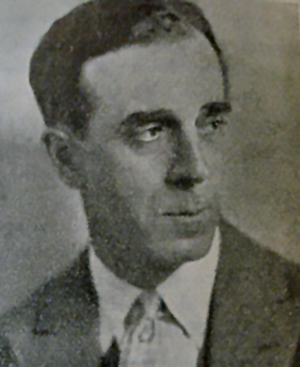Joseph Hislop
Hislop had always wanted to be a singer, but learned the trade of photoengraving first. An Edinburgh chorus master told him his voice would never suffice for a professional career, so he continued with photoengraving, and studied the new three-color process at a specialized London school residing in (and named after) Bolt Court. He was good enough that Bolt Court sent him to Göteborg in Sweden to introduce the three-color process at a company there. While in Göteborg, he sang in a male choir; he pleased – and left photoengraving, stayed in Sweden and studied voice in Stockholm, first with a private teacher, then he was accepted into the opera school at the Royal Opera. I would like to thank Daniele Godor for the picture. I would like to thank Thomas Silverbörg for the recording. Gillet på Solhaug – Stockholm, ?, 2? May 1914 Faust – Stockholm, Royal Opera House, 12 September 1914 Madama Butterfly – Stockholm, Royal Opera House, 29? September 1914 Marouf – Stockholm, Royal Opera House,March ? 1915 Mefistofele – Stockholm, Royal Opera House, April 1915 Les huguenots – Stockholm, Royal Opera House, 1 January 1916 Lakmé – Stockholm, Royal Opera House, 23 February 1916 Manon – Stockholm, Royal Opera House, 29 March 1916 Roméo et Juliette – Stockholm, Royal Opera House, April 1916 Aida – Stockholm, Royal Opera House, 16 August 1916 Rigoletto – Stockholm, Royal Opera House,13 March 1917 Cavalleria rusticana – Stockholm, Royal Opera House, 4? June 1917 La bohème – Stockholm, Royal Opera House, 14? September 1917 Tosca – Stockholm, Royal Opera House, late September 1917 Les pêcheurs de perles – Stockholm, Royal Opera House,12? February 1918 Violantha – Stockholm, Royal Opera House, 19 September 1918 Pagliacci – Stockholm, Royal Opera House, November 1918 La traviata – Stockholm, Royal Opera House, 27 December 1918 Lucia di Lammermoor – Napoli, San Carlo, 15 January 1920 Louise – Torino, Teatro Regio, 17 March 1923 Falstaff – Buenos Aires, Teatro Colón, 1 July 1925 Gianni Schicchi – Buenos Aires, Teatro Colón, 21 July 1925 Werther – Paris, Opéra Comique, 3 April 1926 Carmen – Stockholm, Royal Opera House, September 1928 Manon Lescaut – Stockholm, Royal Opera House, 22? November 1929 Frederica – Glasgow, King Theater, 1 September 1930 Wienervalsen – Djurgården, Cirkus Teater, September 1932 Merrie England – London, Princes Theater, 7 September 1934 Mignon – Gothenburg, Stora Teater, March 1936 Reference: Michael Turnbull Joseph Hislop, Scolar Press, 1992 |
